

Jon Clements, Author (unless otherwise noted) and Editor
Current degree day accumulations
2015 New England Tree Fruit Management Guide Available
| UMass Cold Spring Orchard, Belchertown, MA |
27-April |
| Base 43 (SkyBit) | 153 |
| Base 50 (NEWA) | 76 |
Current bud stages. April 27, 2015, UMass Cold Spring Orchard, Belchertown, MA
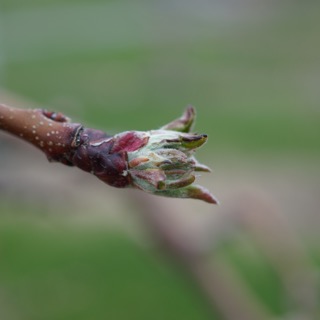 |
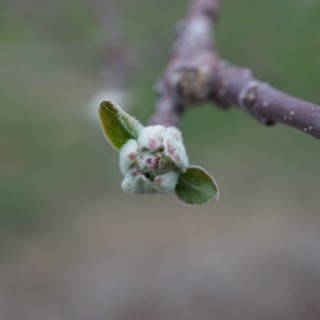 |
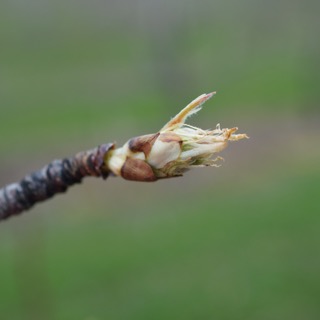 |
 |
 |
Honeycrisp apple green tip to half-inch green |
McIntosh apple early half-inch green |
Gold Russet Bosc Pear early bud burst |
PF-14 Jersey peach early bud burst |
Rainier sweet cherry early bud burst |
| Coming events | Degree days (Base 43) |
| Green fruitworm peak catch | 51-151 |
| Pear psylla 1st egg hatch | 174-328 |
| Redbanded leafroller 1st catch | 112-178 |
| Green apple aphid present | 127-297 |
| Rosy apple aphid nymphs present | 61-109 |
| Pear thrips in pear buds | 137-221 |
| Spotten tentiform leafminer 1st catch | 81-274 |
| Spotten tentiform leafminer 1st oviposition | 143-273 |
| McIntosh half-inch green | 136-221 |
| McIntosh tight cluster | 176-282 |
19-May, 2015 (Tuesday) Fruit Twilight Meeting TBA.
20-May, 2015 (Wednesday) Fruit Twilight Meeting TBA.
For more information and updates, see Upcoming Events
• Things are moving so slow, there is not too much to talk about. I observed nectria canker on the apple cv. Crimson Topaz this week. This is a serious problem of this apple variety, and in order to keep it at bay, a fall and spring application of copper will be necessary. It's getting dry, so particularly if you have planted trees already, the water needs to be turned on. I am hanging pheromone traps for Oriental fruit moth in the very near future. That's it for now...
• A collaboration of tree fruit specialists in all six New England states, and with Cornell University, the 2015 New England Tree Fruit Management Guide (NETFMG) is a must-have for all commercial orchardists. The 2015 NETFMG is 283 pages and includes chapters on: Integrated Crop & Pest Management; Organic Tree Fruit Production in New England; Pesticide and Sprayer Information; Characteristics of Crop Protectants Used on Tree Fruits; Disease, Insect, Weed, Wildlife, and Nutrient Management; and specific spray management recommendations for Apples, Pears, Cherries, Peaches and Nectarines, Apricots, and Plums and Prunes. The 2015 NETFMG is available for purchase for $25 on the UMass Extension Bookstore, http://umassextensionbookstore.com/. (Or you can also use this mail-in form to order Healthy Fruit and other UMass fruit publications.) The 2015 NETFMG will also be available for sale at Fruit Twilight Meetings.
• Note that there is a mistake (at least one) in the 2015 Guide; it says Syllit FL at 2 pints per acre, but label is 1.5 pint per acre, the label is the law and must be followed.
Apple insects to be concerned about and/or treated for at half-inch green:
Peach insects to be concerned about and/or treated for at pink:
Apple Scab Ascospore Maturation, Week 4 (April 27, 2015)
Arthur Tuttle, Elizabeth Garofalo, and Daniel Cooley
We have been examining the maturity of apple scab ascospores using four different methods this year. See April 7 Healthy Fruit (http://healthyfruit.info/hf040815ell466.html) if you want more information about the procedures we are using. This gives us a very good picture of how much inoculum is available at the UMass Cold Spring Orchard in Belchertown. Based on the observations detailed below, it is clear that a small number of ascospores have finally started to be released.
This is later than we would have expected. Normally some inoculum is released around green tip, particularly after a snowy winter. This year, we appear to be delayed by about a week to 10 days. In comparing our results with colleagues who run similar tests in Quebec, they are seeing the same pattern.
Finally we have mature spores. The good news is that the risk of scab infections over the next 5 days is very low. Starting on about May 2 the rate of ascospore maturation will increase markedly, and there’s a 40% chance of rain May 3. We will be entering the period of high risk of scab infection. So, rest up the sprayer this week, but be ready for the weekend and next week. When the next significant rain comes, there will definitely be a risk of scab infection.
Ascospore maturity details
On 4/27, we ran a petri plate assay with cut sections of 6 scabby leaves from the same outdoor collection for 2 hours and then examined the 2 slides. RESULTS: A total of 4 ascospores were seen during the examination of 20 microscope fields at 200 X magnification.
On 4/27 we pulled the microscope slide from the outdoor 2-fan spore trap to document any ascospores that might have been released during the weekend (even though it was dry, so not expected). RESULT: No spores were seen on the slide.
On 4/27 we brought in a fresh batch of scabby leaves from the outdoor collection of scabby leaves (Belchertown). We wetted the leaves and placed them in the indoor funnel spores trap for 20 min. RESULTS: A few spores were seen. This gives us a firm biofix for the pathogen and tells us that scab season is officially underway in Belchertown.
On 4/27 we also performed squash mounts on 10 overwintered fruiting structures (pseudothecia) plucked from 6 leaves to evaluate maturation of ascal sacs and the spores they contain. RESULTS: all 10 pseudothecia had some ascal sacs that contained mature ascospores. The percentage of mature ascal sacs (versus immature) rose from 72 % last week to 85 %. In preparing this procedure, the “squashing” of the pseudothecia caused some of these sacs to rupture, releasing spores into the drop of water. It is doubtful that these spores would have released on their own.
We will attempt to do the 2 lab tests each week, early in the week, until primary scab season is over. The spore-trapping test will be run at intervals that will depend on the rainfall in Belchertown where the scabby leaf collection resides under squares of hardware cloth near the weather station.
Need to get branching on one-year-old wood of apple trees? Like when you get tall whips from the nursery? There are several methods, however, perhaps the relative easiest is to use Maxcel. There are two recommendations on the label, see below. In a nutshell, a high rate of Maxcel can be used in white latex paint just before bud swell applied to the area where branching is desired. This can be applied with a paint roller or brush. See Increasing Branching of Young Apple Trees. OR you can wait until the buds swell and/or break with green tissue and then apply up to 500 ppm Maxcel using a sprayer (or roller or brush) to the area where branching is desired. It's suggested to reduce that rate to 400 ppm as phyto-toxicity to young, green tissue can occur if too high a concentration of Maxcel is used. (And don't use a surfactant! I learned that the hard way once, Maxcel has surfactant built-in.) Several applications using this method may be necessary, and Maxcel always works better when the temperature is on the warm side (above 70 degrees F.). Let me know if any questions, and also see Using Heading vs. Notching With or Without BA Application to Induce Branching in Non-feathered, First-leaf Apple Trees. Also keep in mind that to get these trees growing good, they should be planted early, fertilized at least moderately with nitrogen, and trickle-irrigated more often than not.
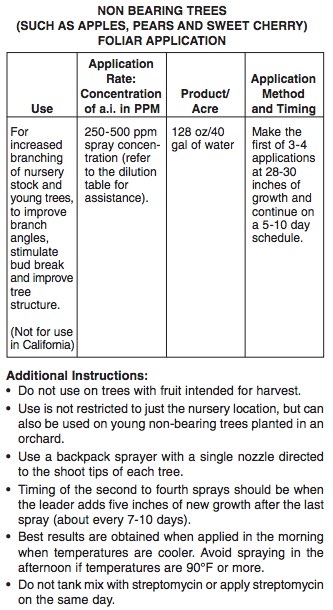 |
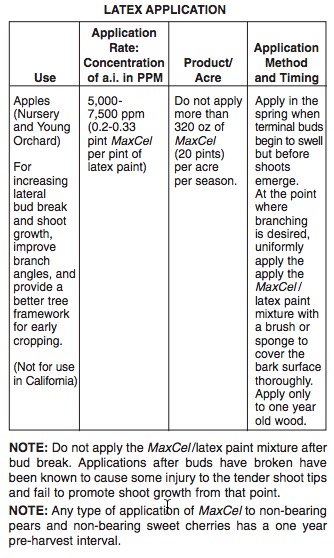 |
No Guest article this week...
Follow me (jmcextman) on FB: https://www.facebook.com/jmcextman
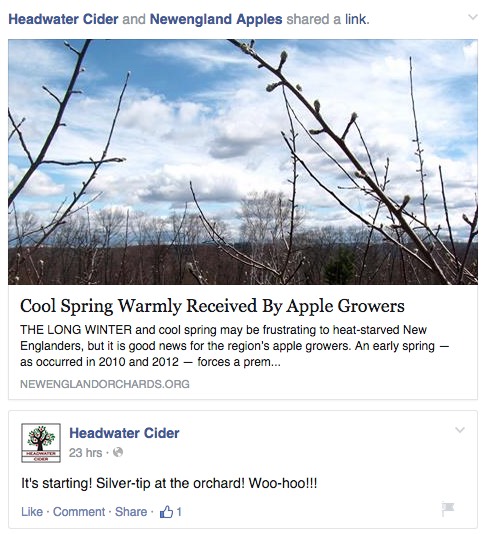
No promises, but after I put you all to the trouble of reading Healthy Fruit, perhaps I can inform and entertain you with a video? This week: Precision Crop Load Management (PCLM, Terence Robinson)
UMass Fruit Advisor: http://umassfruit.com
Scaffolds Fruit Journal: http://www.nysaes.cornell.edu/ent/scafolds/
Network for Environment and Weather Applications (NEWA): http://newa.cornell.edu
Follow me on Twitter (http://twitter.com/jmcextman) and Facebook (http://www.facebook.com/jmcextman)
UMass Vegetable & Fruit IPM Network (on Facebook, http://www.facebook.com/umassipmteam)
The next Healthy Fruit will be published on Tuesday, May 5 or thereabouts, 2015. As always feel free to get in touch with any member of the UMass Fruit Team (http://extension.umass.edu/fruitadvisor/team-members) if you have questions or comments.